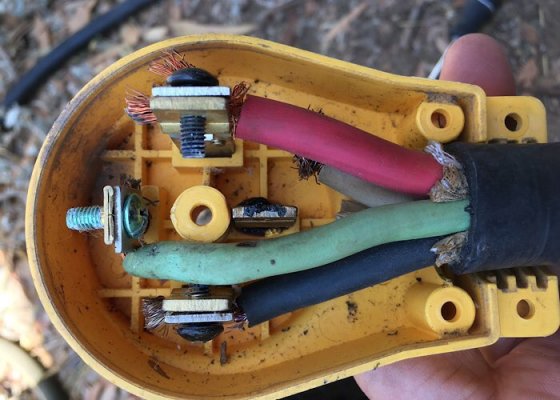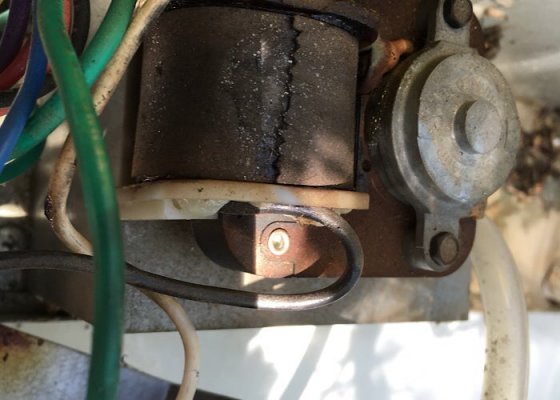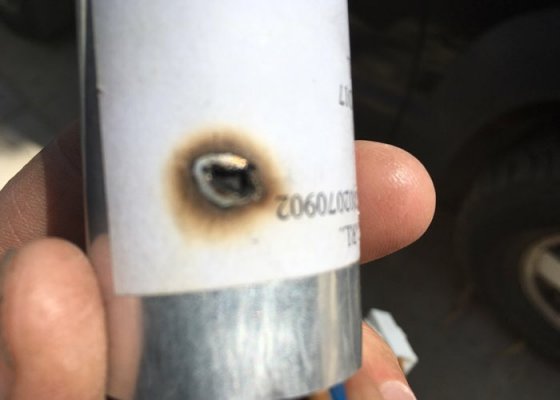There's a funny ending to this story, which I'll share with you, because I know NO ONE else has ever made this mistake.
In a Winnie 42QD, you, basically, have to disassemble the rear bathroom to get the washing machine out, because the mother board and surge capacitor can only be accessed by removing the washing machine's rear access panel. To get the washer out, you have to remove the valance around the large emergency-escape window, the macerator toilet, a large facia panel that covers the washer and dryer, a heat exchanger for the Aqua Hot system, a magazine rack, and you have to disconnect the hot and cold water hoses at the rear of the washer by reaching through an access hole that's barely big enough for the task. Then, of course, you get to reinstall everything.
I'm quite sure the designers were laughing their butts off when they were designing how this puzzle would go together. (Although in all honesty, I don't really see a better way of doing it.)
So I got everything apart, got the washer out (it's heavy!) swapped out the parts, and then before I reinstalled everything, I wisely (or so I thought) tested the washing machine by running a load through it. It all worked. Hooray! I lifted the washer back into its cabinet, and then went through the very time-consuming process of carefully replacing all the components and cabinets. Done!
After gathering all my tools and patting myself on the back for a job well done, I walked out of the rear bathroom, and there on the bed was the washing machine's rear access panel. I had forgotten to reinstall it before lifting the washer back into its cabinet. :'(
I briefly considered just leaving it off, or perhaps using my chain saw to carve an access panel in the rear cap, which would have given me MUCH easier access to the rear of the washer, but alas, I knew I was going to have to tear everything apart again. I cried for a few minutes (it was a manly cry) then disassembled the rear bathroom... again.
Kev



